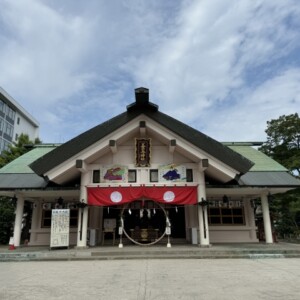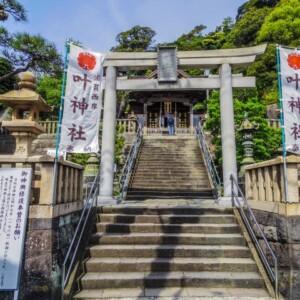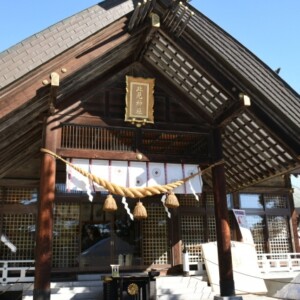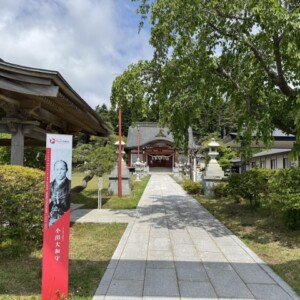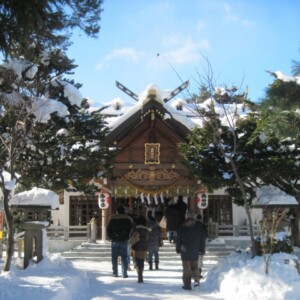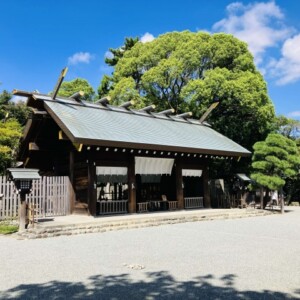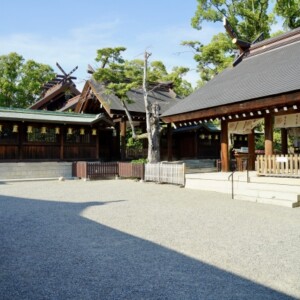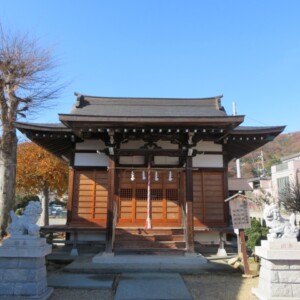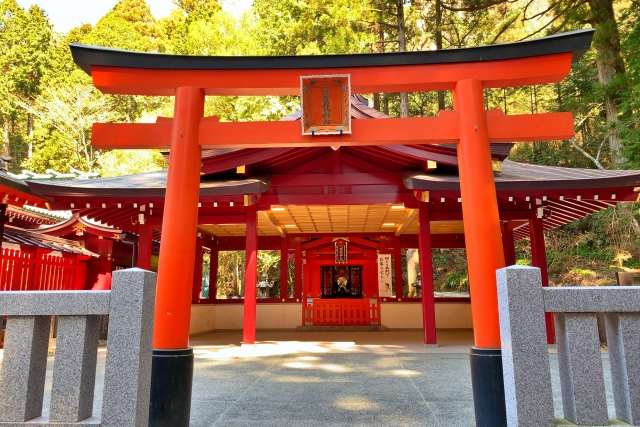
Hakone Shrine|Complete guide to the history, highlights, and worship information of the venerable Kanto town’s chief Shinto shrine
Hakone Shrine, located on the beautiful shores of Lake Ashi, is a venerable old shrine with a history of over 1,250 years as the Kanto region’s chief Shinto shrine. Known for its peaceful torii gate floating on the lake, the shrine attracts many worshippers for its blessings of good fortune, good luck, and traffic safety.
Outline and basic information about Hakone Shrine
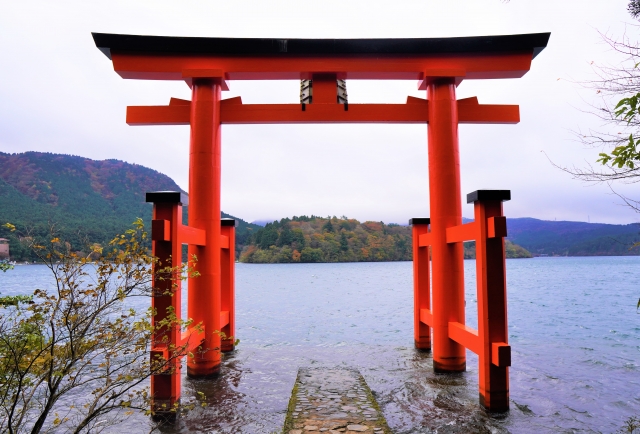
Hakone Shrine is located in Moto-Hakone, Hakone-cho, Ashigarashita-gun, Kanagawa Prefecture, and is officially called “Hakone Shrine. Since ancient times, the shrine has been known as “Hakone Gongen,” the chief guardian of the Kanto region, and is still visited by more than 20 million tourists annually from Japan and abroad. The Kuzuryu Shrine (Shingu) is also located within the grounds of the shrine, and together with the Hakone Motomiya Shrine, they make up the “Hakone Sanja” (three Hakone shrines).
History and Origin
According to the Hakone Shrine’s Engi (Hakone Mountain Engi, a legend of Hakone Shrine), in the reign of the 5th Emperor Koaki, a hermit named Sei Usui opened a shrine on Komagatake (Mt. Hakone) and enshrined Mt. Hakone became a major sacred site of mountain worship in the Kanto region.
The shrine was built on its present site in 757, the first year of the Nara Period (710-794). While ascetic training on Mt. Hakone, Manmaki Shonin received an oracle from the Great Hakone Deity and built the shrine at the present location by Lake Ashi in accordance with an imperial edict. The shrine dedicated to Hakone-daikami was named “Hakone Sansho-gongen (Hakone Gongen),” which combined Buddhism and Shugendo in particular to attract the faith of the Asano community.
In the Heian period (794-1185), the Hakone Road was opened as an official part of the Tokaido Highway, and the shrine became widely known among travelers who prayed for safety along the way. In the Kamakura period (1185-1333), Minamoto no Yoritomo deeply believed in the shrine, and it became the second most important shrine of the shogunate after Tsurugaoka Hachiman-gu Shrine, giving rise to the custom of “Nisho-mode” (pilgrimage to two shrines). After that, the shrine flourished as a shrine that was deeply revered by samurai families, such as the regent Hojo and the warlord Tokugawa Ieyasu.
With the separation of Shintoism and Buddhism in the Meiji era (1868-1912), the name of the shrine was changed from Hakone Daigongen, the chief guardian of the Kanto region, to Hakone Shrine. In 1873, the shrine was visited by the Emperor Meiji and Empress Dowager Shoken, as well as by various members of the imperial family, and even today it is known as a highly prestigious shrine visited by many people from the political and business world.
Gods and Benefits
Hakone Shrine enshrines three deities: Ninigi no Mikoto, Konohanasakuyahime no Mikoto, and Hikohohodemi no Mikoto.
The three deities are highly virtuous in the areas of good luck and bad luck removal, fulfillment of one’s wishes, protection of one’s luck in winning, safety in traffic (on the road), and marriage. The Hakone Grand Deity is listed as the first of the Shinto and Buddhist deities to which wishes are offered in the “Gojoshiki-moku,” the basic code of the Kamakura shogunate, and has long been worshipped by the warrior class.
The Kutouryuu Shrine (Shingu), the last shrine on the grounds of the temple, enshrines Kutouryuu-taijin and is revered as the god of good fortune, protection of money, business prosperity, and match-making. The shrine is visited by many people from all over Japan, especially on the 13th of each month for the Monthly Festival held at the main shrine.
Hakone Shrine Highlights
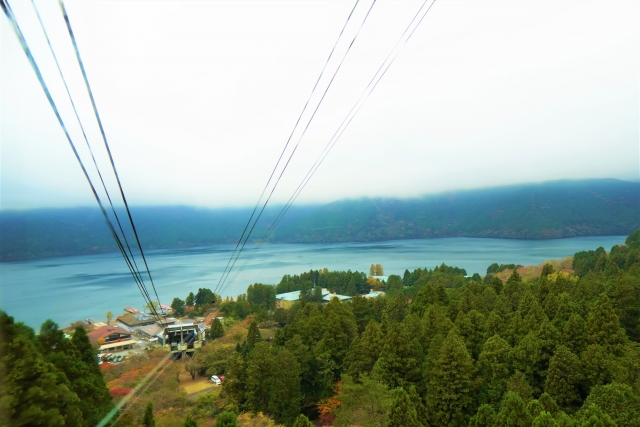
Hakone Shrine is blessed with the beautiful natural environment of Lake Ashi, forming a sacred space where historical buildings and rich nature are in harmony. There are many highlights including the Peaceful Gate standing on the lake, the vermilion-lacquered Gongen-zukuri shrine pavilions, and the Treasure House, which houses important cultural properties.
Architectural and Structural Attractions
The beautiful vermilion-lacquered Gongen-zukuri style shrine pavilions of Hakone Shrine still retain the atmosphere of the Shinto/Buddhist syncretism period. In front of the main shrine building, there is a stone staircase approach surrounded by old cedars, with a refreshing view as you climb the 90 or so stone steps. The side paths are also provided for the physically challenged and those in wheelchairs, making it easy for everyone to visit the shrine.
The most famous shrine on the grounds is the “Heiwa no Torii” (Gate of Peace), which stands on Lake Ashinoko. In 1964, former Prime Minister Shigeru Yoshida wrote “Peace” on the gate to commemorate the 1200th anniversary of Hakone Grand Shrine and the Tokyo Olympics.
The Kutouryuu Shrine (Shingu) is also located on the grounds of the temple, where a sacred water called “Ryujinsui” (dragon water) is said to cleanse the body and soul of impurities and attract good things, attracting many visitors to the shrine.
Natural and scenic beauty
Hakone Shrine is located on the shores of Lake Ashi, surrounded by rich nature, and visitors can enjoy beautiful scenery throughout the four seasons. The approach to the shrine is embraced by huge old cedar trees, and the air of sanctity and purity envelops visitors as they step into the shrine grounds.
A pure forest of himeshara (a natural monument of Kanagawa Prefecture) stretches on the hill behind the shrine, and its pretty flowers bloom from late June to late July. This pure forest is protected as a rare natural environment in the Kanto region, and is a testament to the richness of Hakone’s natural environment.
The view of the beautiful surface of Lake Ashi and Mt. Fuji is exceptional, and in particular, the view of Mt. Fuji over the Heiwa no Torii (Gate of Peace) is known as one of Hakone’s most spectacular sights. Fuji over the Heiwa-no-torii gate is known as one of the most spectacular views in Hakone. If the weather permits, you can also enjoy a wonderful view from a sightseeing boat.
Cultural Properties and Important Collections
Hakone Shrine holds a large number of valuable cultural properties, which are on permanent display in the Treasure House on the shrine grounds. On display are a seated statue of Manmaki Shonin, a seated statue of a male deity, and a seated statue of a female deity, which are designated as national important cultural properties, as well as an iron bath kettle, a yudo-kettle, and a picture scroll of Hakone Gongen’s auspiciousness.
The seated statue of Manmaki Shonin is a valuable historical document as a portrait sculpture of Manmaki Shonin, the founder of Hakone Shrine. The seated male and female statues are considered to be among the oldest statues of deities in the Kanto region, and they represent the excellent sculpting techniques of the Heian period.
The Hakone Gongen Engi Emaki is a color-on-paper picture scroll produced in the late Kamakura period and is said to be the oldest picture scroll adaptation of the Honchi Monogatari, which describes the origin of Hakone Gongen and Izu Ryosho Gongen in beautiful pictures and lyrics.
The museum also houses a number of treasures of high historical value, such as the “Sokinmaru” and “Usuurimaru” swords associated with the Soga brothers, a white porcelain dongxian, said to be a flute played by Shizuka Gozen, and letters from Oda Nobunaga and Toyotomi Hideyoshi.
Visiting and Worship Information
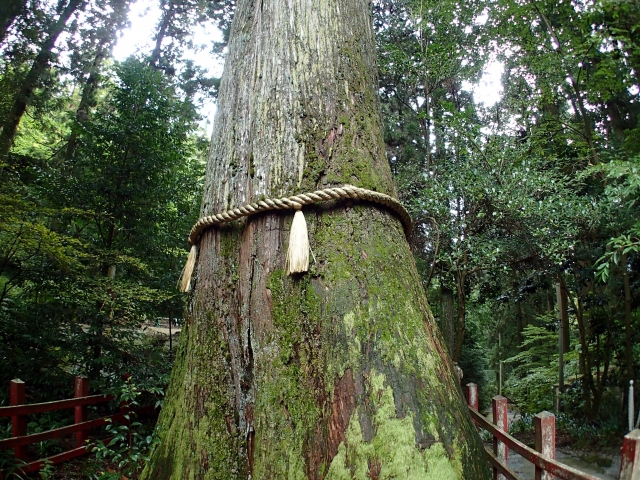
At Hakone Shrine, visitors can worship according to the ancient Shinto rituals, and various festivals are held throughout the year. After climbing the stone steps of the main approach to the shrine and praying at the main shrine, visiting the Kutouryuu Shrine (Shingu) and drinking water from the Ryujinsui (dragon god’s water) are popular.
Worship Etiquette and Manners
At Hakone Shrine, visitors follow the general manners of worship at a Shinto shrine. First, purify your body and mind at the hand-watering basin at the entrance, and then climb the stone steps of the main approach to the main shrine. At the main shrine, pray in the manner of “ni-ai ni haitate ichi-ai,” or “two cheers, one clap, and one bow.
The temple grounds are a sacred place, so it is important to refrain from talking loudly or running around, and to visit the shrine with a sense of reverence. Photography is allowed, but please be considerate not to disturb other worshipers and refrain from taking pictures inside the main shrine.
At Kutouryuu Shrine (Shingu), visitors can drink dragon god water. It is believed to purify impurity from the body and mind by taking it into the mouth, and plastic bottles are available for purchase to take home. You can also bring your own container to take home.
Annual and Seasonal Events
Many festivals are held throughout the year at Hakone Shrine. On the 1st and 15th of each month, the Monthly Service is held and open to all. Anyone can participate in the formal rites by making an application.
The most important festivals are the Kosuimatsuri on July 31 (Yoimiya, or “evening shrine” and “grand procession of Kuzuryu-daijin”) and the annual festival on August 1 (Honsai, or “main festival” and “grand procession of Hakone-daijin”). During this period, “Lake Ashinoko Summer Festival Week” is held for a week from July 31 to August 6, attracting many worshippers.
At Kutouryuujinja, the monthly festival is held at the main shrine on the 13th of each month, attracting many worshippers from all over the country. On the 15th day of each month, the Getsuji Matsuri is held at the Kuzuryu Shrine (Shingu), which is called “Ryosha mairi Getsuji Matsuri,” and is held in succession with the Getsuji Matsuri at Hakone Shrine.
Red Seal and Good Luck Charm Information
Four red seals are available at Hakone Shrine. The red seal for Hakone Shrine, Kutouryuu Shrine, Ebisu Shrine of the Seven Lucky Gods of Hakone, and Hakone Motomiya Shrine is 500 yen per shrine. Red seals for Hakone Motomiya Shrine are available at Motomiya Shrine on days when the shrine is open for worship, and at Hakone Shrine for visitors who come to Motomiya Shrine on other days.
A red seal book is also available, and a red seal for one shrine is included in the initial fee of 1,500 yen. This is the Hakone Shrine’s original red seal book to be accepted as a token of gratitude to the gods and as a proof of visit to the shrine.
Various types of good luck charms and sacred cards are also available to meet various wishes, such as good luck and bad luck prevention, traffic safety, matchmaking, and academic success. Kutouryuu Shrine’s amulets are especially popular for their benefits in protecting money, business, and marriage. The hours for the omamori office and the seal are from 8:15 am to 5:00 pm.
Access and Visiting Information
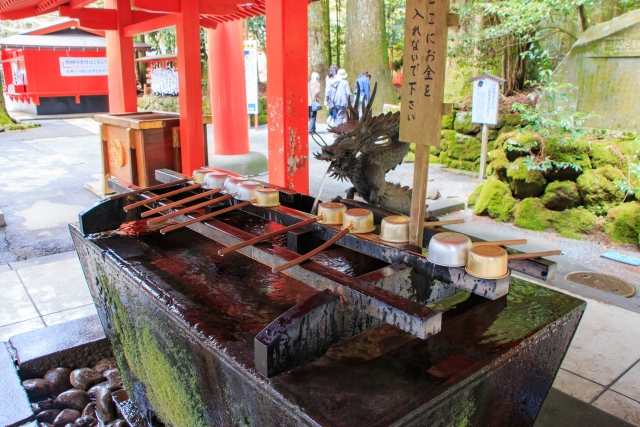
Hakone Shrine is located in the Moto-Hakone area on the shores of Lake Ashi and is accessible by public transportation and private vehicles. It is relatively easy to access from the Tokyo metropolitan area, and since it is located in the center of Hakone sightseeing, it can be visited in conjunction with other tourist attractions.
Transportation Access
Access by train and bus is convenient. From the direction of Shinjuku, the most direct route is a 3-minute walk from the Hakone Highway Bus “Mountain Hotel” stop. If you take the Odakyu Line, take the Odakyu Romance Car from Shinjuku Station to Hakone-Yumoto Station (about 85 minutes), then take the Hakone Tozan Bus (Route H or K) from there (about 30 minutes) to the Hakone Shrine Entrance stop, which is about a 10-minute walk.
However, due to a change in the Hakone Tozan Bus route, the bus will not stop at “Hakone Jinja Iriguchi” between 10:00 and 16:00. Please use the next bus stop, “Moto Hakone Port,” during these hours.
From the Osaka area, you can take the JR Tokaido Line or Shinkansen bullet train via Mishima Station, Atami Station, or Odawara Station. From Mishima Station, take a 53-minute bus ride to Moto Hakone Port, a 63-minute bus ride from Atami Station to Moto Hakone Port, or a 75-minute bus ride from Odawara Station to Hakone and Moto Hakone.
It is also accessible by private car, taking about 30 minutes from the Gotemba Interchange on the Tomei Expressway and about 45 minutes from the Odawara-Nishi Interchange on the Odawara-Atsugi Road. However, it is recommended that you allow plenty of time for your visit, as the roads can be congested during the tourist season and on weekends.
Hours of Admission, Fees, and Parking Information
Hakone Shrine is open to visitors 24 hours a day, every day of the year. However, there are set hours for various types of reception.
The hours for the Office of the Sacrificial Seal and the Office of the Sacred Seal are from 8:15 a.m. to 5:00 p.m., and for prayer services, from 8:30 a.m. to 4:00 p.m. The Treasure Hall is open from 9:00 am to 4:00 pm, and is open year-round, but may be temporarily closed for exhibition changes.
Admission to the Treasure Hall for individuals is 500 yen for adults (junior high school students and older) and 300 yen for children (elementary school students). For groups (25 or more people), the admission fee is 350 yen for adults (junior high school students and older) and 200 yen for children (elementary school students).
Several parking lots are available around the temple grounds, including pay parking lots. Parking Lot 3 is reserved for people with disabilities and wheelchair users, and is also available for those praying for traffic safety. However, please note that the road leading to Parking Lot 3 is an alternating access road for authorized vehicles only, so please be careful when passing through.
During tourist season, weekends, and festivals, the parking lot can be crowded, so we recommend that you visit early in the morning or use public transportation. Especially if you wish to take pictures at the Peace Gate, aim to visit in the early morning hours when there are fewer people.
<Address> 80-1 Moto-Hakone, Hakone-cho, Ashigarashita-gun, Kanagawa Prefecture, 250-0522
Reference site
Hakone Shrine (Kutouryuu Shrine) official website: https://hakonejinja.or.jp/



